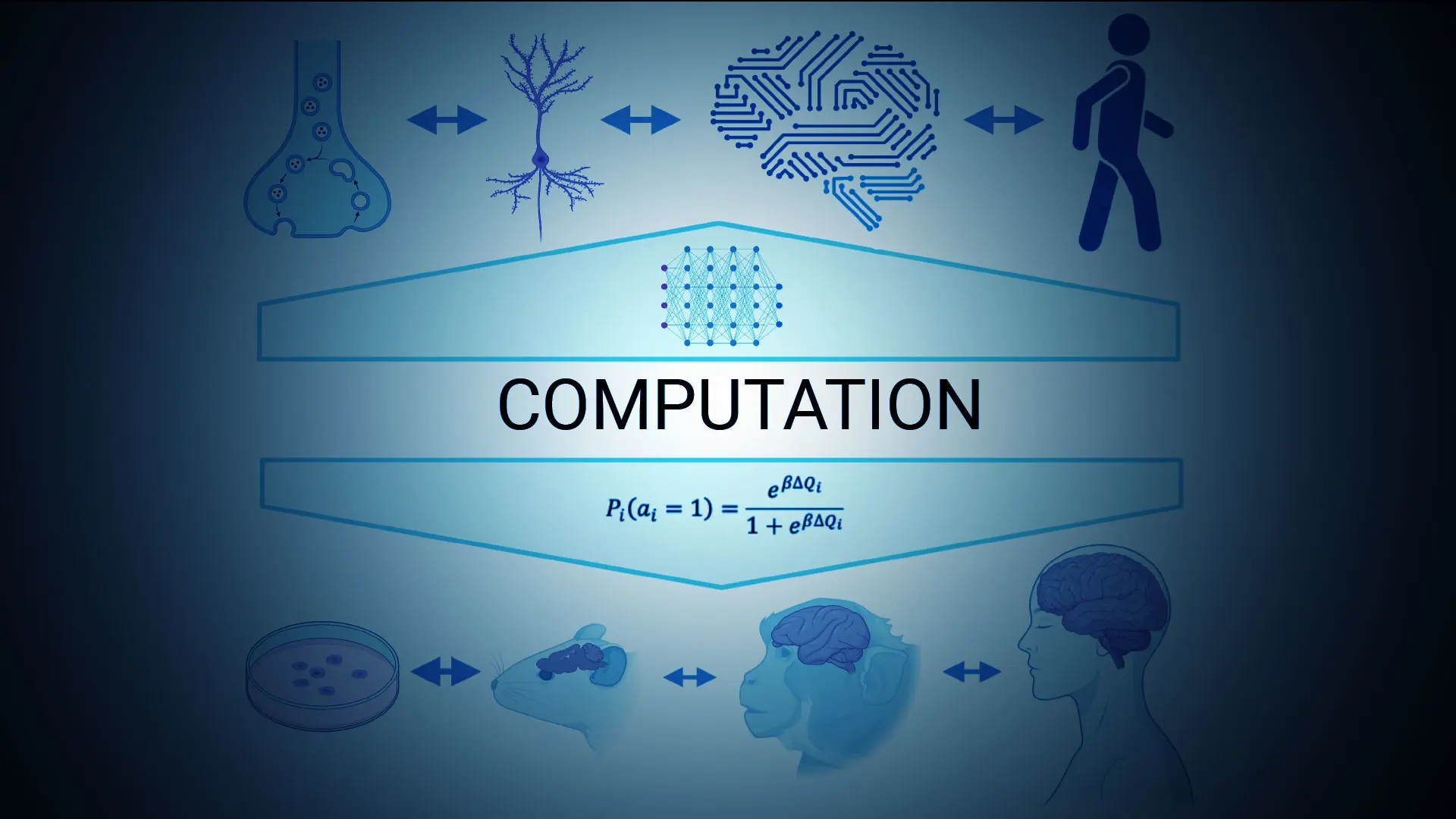Highlighting the contributions made to the field by Daniela Schiller, PhD, and Xiaosi Gu, PhD
The brain, in essence, is a computing machine. To identify the computations that the brain performs is the primary pursuit of the field of computational neuroscience. At The Friedman Brain Institute, our goal is to explore many levels—from molecular and cellular signaling to brain-wide communication and clinical application in brain disorders using a cross-species approach. See figure below.

The computing brain provides a common language for artificial and biological intelligence to work together, resulting in innovative methods for a deeper understanding of how the brain works. Using machine learning and artificial neural networks that learn about the environment, we create models that provide accurate predictions of cognition, behavior, and brain activities.
For example, we can now construct mathematical models of cognition to account for why humans have cravings for drugs or food, why some memories are longer lasting than others, and even how we perceive social relationships and navigate in complex social networks. We can also create biologically constrained models that can predict and explain the dynamics in brain activities across rodents, nonhuman primates, and humans. These biophysical models have been used to account for the direction of information flow in complex, whole-brain level neural networks, expanding our knowledge of neuronal communication beyond a handful of cells and simple circuits.
We can now construct mathematical models of cognition to account for why humans have cravings for drugs, or food, and why some memories are longer-lasting than others.
Understanding the computing brain also directly benefits clinical practice by informing the diagnosis and treatment of brain-related disorders. Work underway at The Friedman Brain Institute is showing great potential to elevate the standard of patient care.
For instance, our research has revealed the neural computations of threat learning and how they diverge in the aftermath of combat trauma. We have also identified how information flow might be disrupted in neurodevelopmental disorders, such as autism, and in neuropsychiatric conditions, such as cocaine use disorder. Further, we can identify biomarkers for treatment response and even predict the complex trajectories that often characterize psychiatric disorders, providing immediate utility for the clinic. These predictive models have shown their utility in disorders such as major depression and cannabis use disorder and will eventually impact a wide range of neuropsychiatric and neurological disorders.
Work underway at The Friedman Brain Institute is showing great potential to elevate the standard of patient care.
Collectively, advances in computational neuroscience models have the potential to not only improve our scientific understanding of the brain, but also lead to the development of new treatments and therapies for patients in need across the globe.
Featured

Daniela Schiller, PhD
Professor of Psychiatry, and Neuroscience, Icahn School of Medicine at Mount Sinai

Xiaosi Gu, PhD
Associate Professor of Psychiatry, and Neuroscience, and Founding Director, Center for Computational Psychiatry, Icahn School of Medicine at Mount Sinai
